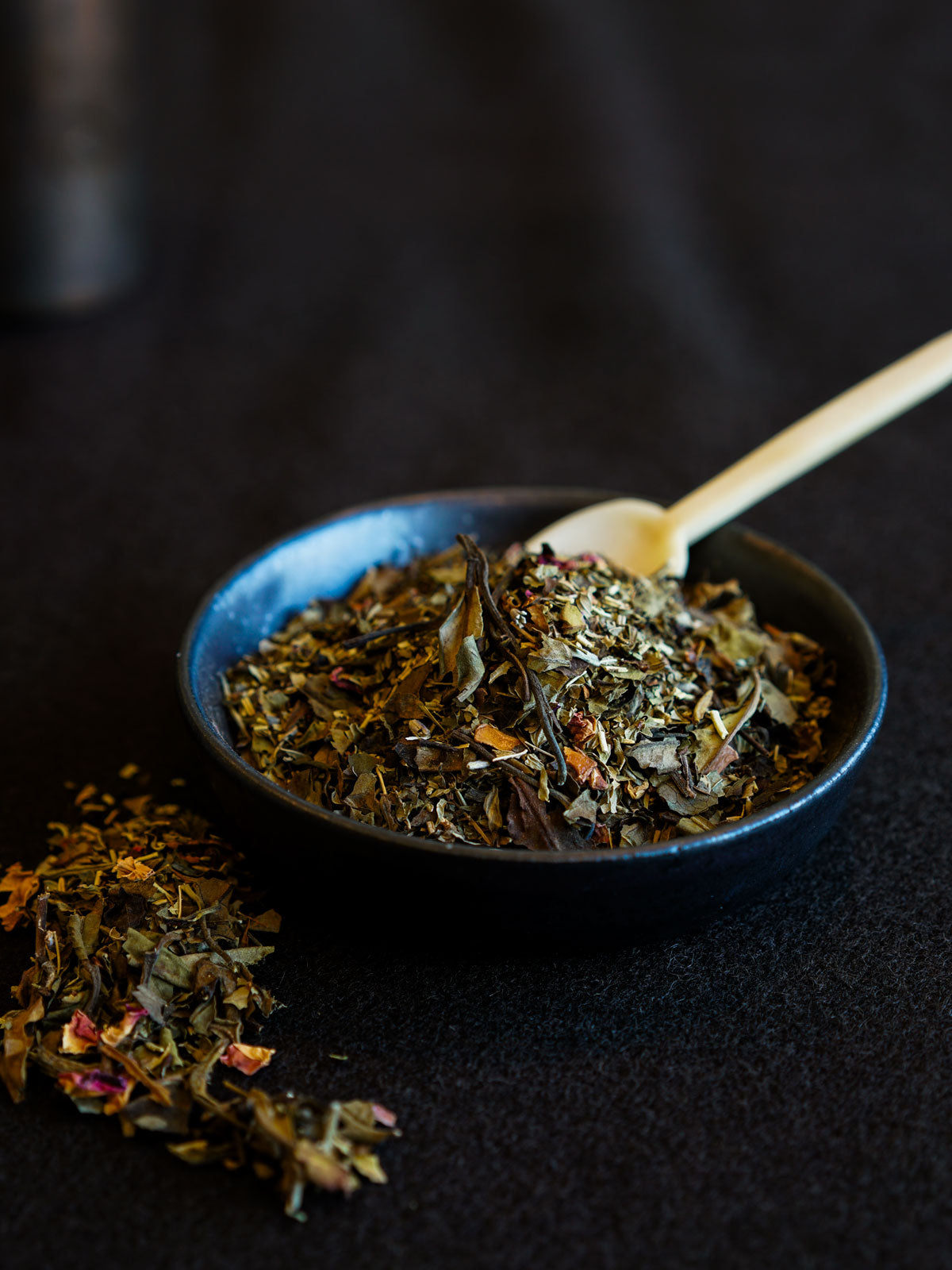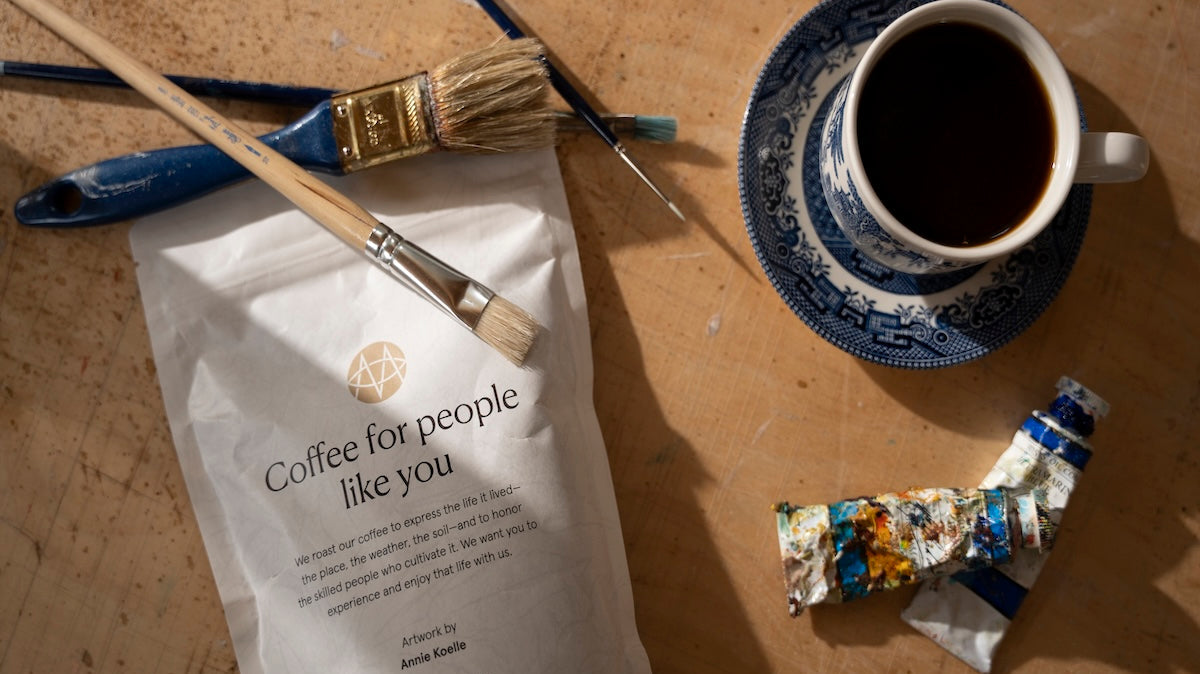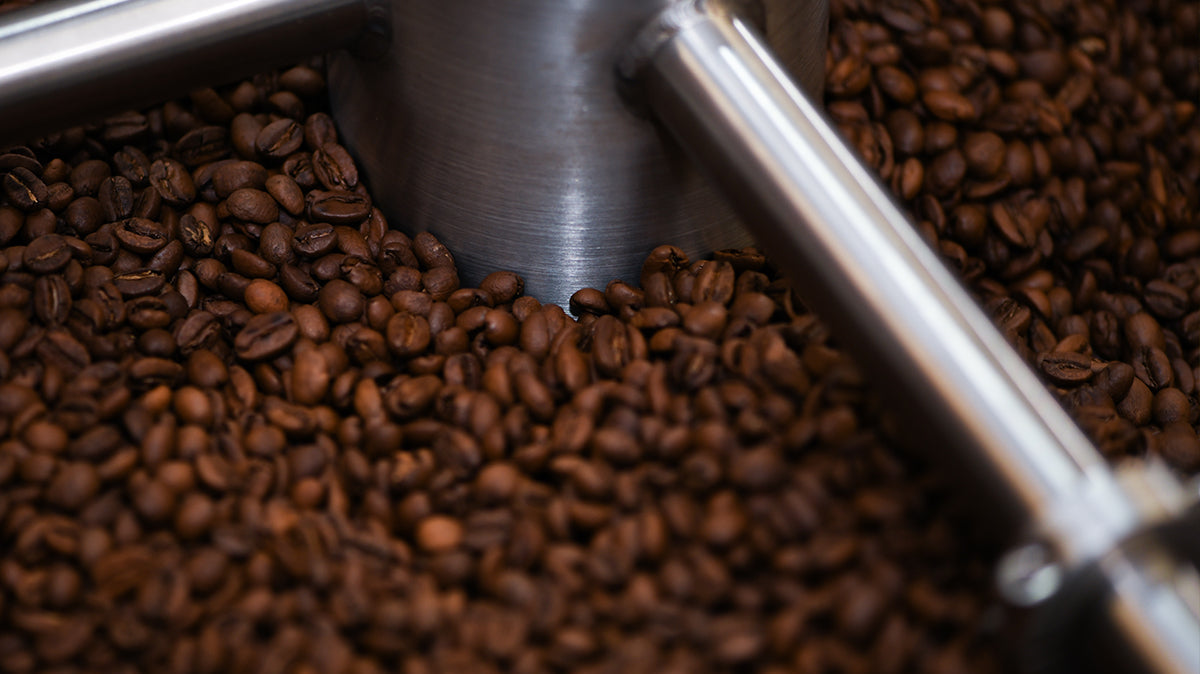Looking for a coffee drink that’s equal parts bold and refreshing? The espresso tonic might be your new favorite. With its sparkling texture, vibrant acidity, and striking presentation, this drink highlights espresso’s brighter, fruit-forward notes in a totally unique way.
Combining freshly brewed espresso with chilled tonic water over ice, the espresso tonic is crisp, lightly bitter, and surprisingly complex. It’s gained a cult following in cafés and home kitchens alike for being easy to make, and even easier to enjoy.
In this guide, we’ll show you how to make an espresso tonic at home, including tips for achieving the perfect balance and several creative ways to adapt it using syrups, herbs, and cold brew.
What is an espresso tonic?
An espresso tonic combines a shot or two of freshly pulled espresso with chilled tonic water over ice. The result is a layered, slightly bitter drink that balances the acidity and fruitiness of espresso against the quinine bite and carbonation of tonic water.
The drink is believed to have originated in Scandinavian coffee bars in the early 2010s, reflecting the region’s embrace of light-roasted, high-acidity coffees. Since then, it has become a signature summer drink in cafés and competitions alike, appreciated for its clarity of flavor and striking visual presentation.
Why try an espresso tonic?
The espresso tonic highlights characteristics of coffee that other brewing methods can’t quite replicate. The bubbles of the tonic water lift and emphasize high notes in the espresso, while the chill of the ice tempers its bitterness. For coffees with citrus, berry, or floral profiles, the combination can be revelatory.
The drink is also practical: it is quick to prepare, requires no specialized equipment beyond an espresso machine and a tall glass, and works equally well as a café feature or a home experiment. Plus, an espresso tonic is extremely refreshing and energizing on particularly hot days.
Ingredients and equipment for the perfect espresso tonic
- Espresso: 1–2 shots (about 1.5–2 ounces), freshly brewed. Use a coffee with bright, fruity, or floral notes for best results—like our Pink Lady blend.
- Tonic water: 4–6 ounces, well chilled. Opt for high-quality tonic water with natural quinine and balanced sweetness.
- Ice: Large, clear cubes are ideal. Smaller ice tends to melt quickly and dilute the drink.
- Glass: A tall, narrow glass (like a highball).
- Optional garnish: A strip of lemon, lime, or orange peel, or even a sprig of rosemary for a subtle herbal note.
How to make an espresso tonic at home
Making an espresso tonic requires no more than a few ingredients and a little care in execution. Although the process is simple, attention to detail is the secret ingredient to making the drink as vibrant and balanced as intended. Each step contributes to the final presentation and flavor.
1. Chill everything ahead of time.
Tonic water and glassware should be as cold as possible. When freshly brewed, espresso is incredibly hot. Chilling everything ahead of time helps maintain the crispness of the drink and keeps the ice from melting too quickly.
2. Fill the glass with ice.
Pack the glass with ice cubes all the way to the top. Remember, that espresso is hot!
3. Pour the tonic water first.
Add the chilled tonic water directly over the ice. Pouring it first prevents the espresso from agitating the bubbles too much and helps preserve the visual layers. Aim for about 4–6 ounces of tonic, depending on taste and glass size.
Pro tip: Adjust the ratio of tonic to espresso depending on preference. A common starting point is one part espresso to three parts tonic.
4. Brew the espresso.
Prepare 1–2 shots of espresso using freshly ground coffee. Pull the shot directly into a small pitcher or demitasse to make pouring easier.
Pro tip: A double shot of espresso creates a more intense coffee character, but it can overpower delicate tonic flavors if the ratio isn’t adjusted. Experiment with proportions to find the right balance for your tastes.
5. Slowly pour the espresso over the tonic.
Pour the hot espresso gently over the back of a spoon or down the inside of the glass. This minimizes foam and helps the espresso float briefly before mingling with the tonic, creating a marbled, layered effect.
Pro tip: The temperature difference between the hot espresso and cold tonic contributes to the drink’s crispness, but it can also cause the tonic to foam excessively if poured too quickly. Always pour the espresso slowly and carefully.
6. Garnish and serve
Express a twist of citrus peel over the glass to release its aromatic oils, then drop it into the drink. A sprig of fresh herbs can also add a unique fragrance.
7. Stir gently if desired.
Some prefer to leave the drink layered and allow the flavors to blend naturally while sipping. Others give it a light stir before drinking. Both approaches are valid, it’s just a matter of preference.
Creative espresso tonic variations to explore
The espresso tonic is incredibly versatile, offering an ideal canvas for experimentation. With just a few thoughtful additions, the drink can take on new flavor profiles while maintaining its refreshing character. Below are several creative variations on this already delicious beverage.
Citrus-infused tonic waters
Tonic waters naturally pair well with citrus, which is why most premium brands now offer flavored options. A grapefruit-infused tonic can highlight espresso’s acidity and adds a subtle sweetness. Blood orange or yuzu tonics provide a bolder flavor. For a more nuanced twist, try a lemon-thyme or bergamot-infused tonic to introduce herbal and floral notes alongside the citrus.
Flavored syrups and cordials
Some coffee syrup or cordial can transform the espresso tonic into a more aromatic, dessert-like drink without overwhelming its crispness. Lavender syrup imparts a delicate floral character, while vanilla adds warmth and rounds out the quinine’s bitterness. Elderflower cordial, common in European cafés, introduces a light, honeyed aroma that complements both coffee and tonic beautifully. Start with no more than ¼ to ½ ounce and adjust to taste.
Learn more: How to Make Coffee Syrup at Home: Easy DIY Recipes for Delicious Coffee Drinks
Herbs and aromatics
Fresh herbs can add a layer of complexity to an otherwise minimalist drink. A sprig of rosemary, thyme, or mint can be lightly muddled in the glass before adding ice, or simply used as garnish to lend fragrance. For a spicier variation, express the oils of a clove-studded orange peel over the glass, or add a star anise for a faint licorice note.
Cold brew tonic
Don’t have an espresso machine at home? Substituting cold brew concentrate for espresso results in a smoother, less acidic drink that still offers plenty of caffeine. This variation is ideal for those who prefer a gentler coffee flavor or want to prepare the drink in batches. Combine 2–3 ounces of strong cold brew concentrate with chilled tonic and ice, and garnish as desired.
Bitters and tinctures
A few drops of cocktail bitters can add depth and complexity without adding sweetness. Orange bitters complement citrus notes, while cardamom or chocolate bitters enhance the drink’s richness. Experiment with just a dash because these are highly concentrated flavors.
If you’ve got coffee and bitters on hand, why not check out our list of must-try coffee cocktails →
Playing with proportions and presentation
Espresso tonic is an incredibly customizable beverage—adjusting the espresso-to-tonic ratio can dramatically shift the drink’s character. A lighter pour of espresso allows the tonic’s bitterness to shine, while a stronger espresso presence creates a bolder, more intense experience.
Seasonal inspirations
With a few minor adjustments, the espresso tonic moves beyond a simple summer refreshment and becomes a year-round showcase for coffee’s versatility and depth. Here are some of our favorite combinations.
- Spring: Incorporate fresh berries or a splash of stone fruit syrup.
- Autumn: Experiment with a spiced tonic and a cinnamon stick garnish.
- Winter: Try a rosemary sprig and a splash of cranberry syrup for a refreshing festive drink.
Enjoy a better espresso tonic with the right coffee
The espresso tonic is proof that great coffee doesn’t have to be complicated. With just a few ingredients and a little attention to detail, it’s possible to create a drink that’s crisp, refreshing, and full of character, perfect for warm weather or anytime something light and lively sounds better than something hot and heavy.
For a truly standout version, start with a coffee roasted to bring out its remarkable tasting notes. Our single-origin coffees and blends are a great match for this beverage, making it easy to craft a refreshing espresso tonic at home that rivals anything you’d find at a café.
Shop Methodical Coffee today →
You might also like:
- Dalgona Coffee: Everything You Need to Know About Whipped Coffee
- Cold Brew Coffee vs. Iced Coffee: What's the Difference?
- How to Make the Perfect Affogato Coffee Dessert at Home












